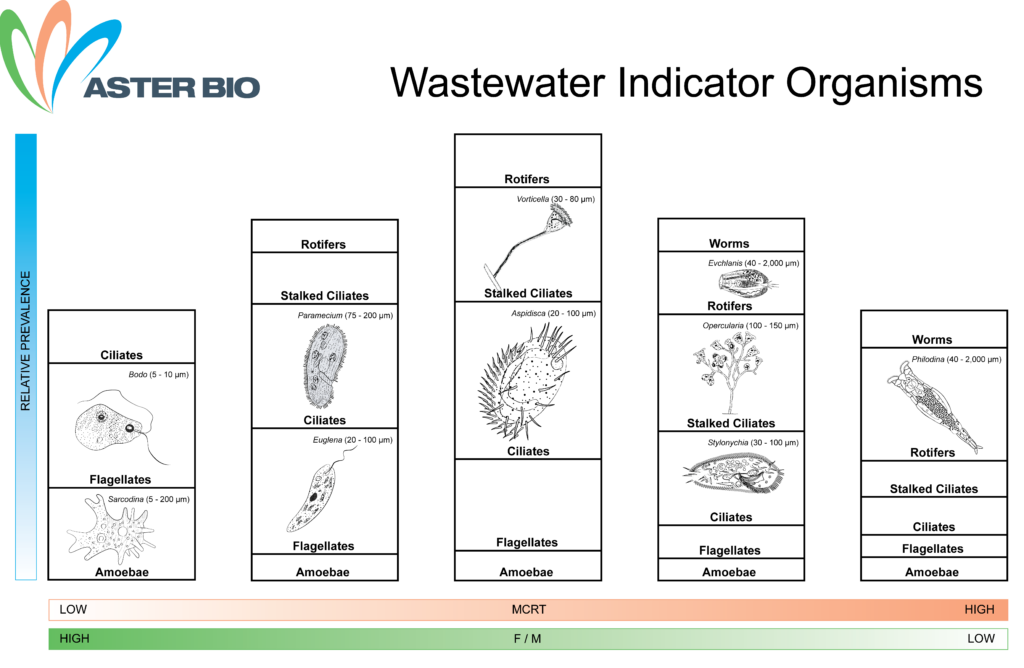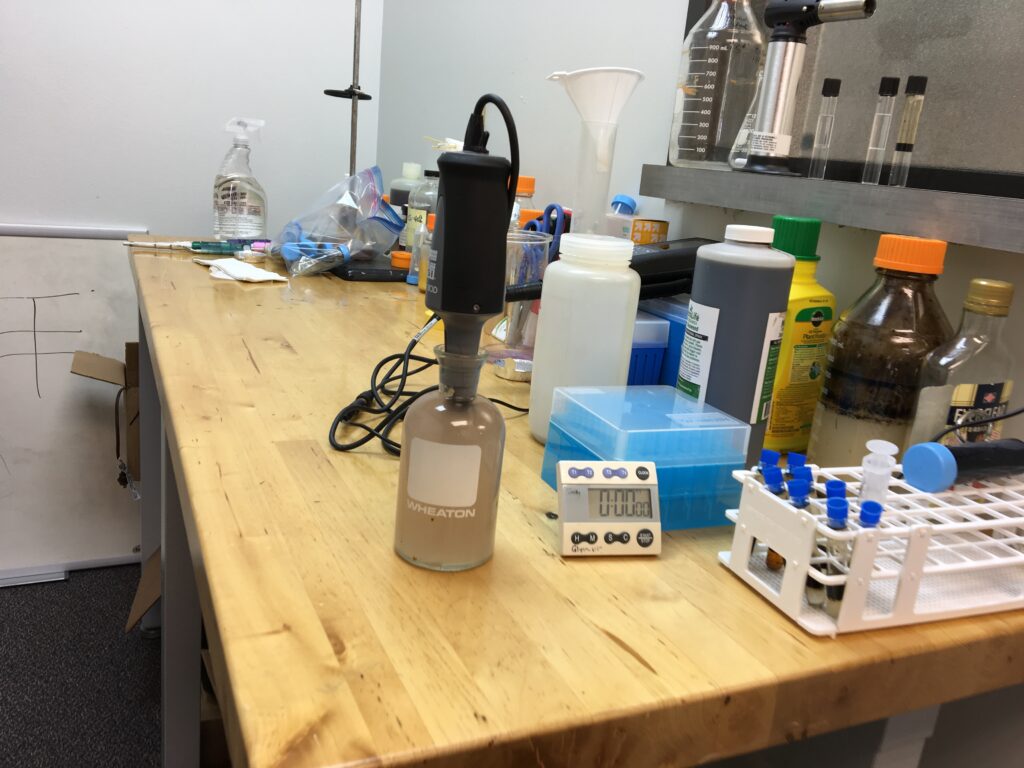The attached poster relates observed protozoa and metazoa populations to F/M and MCRT. We find it useful to post near the lab microscope to help with interpretation and finding where you are on the growth curve.

Leaders in Biomass Management
The attached poster relates observed protozoa and metazoa populations to F/M and MCRT. We find it useful to post near the lab microscope to help with interpretation and finding where you are on the growth curve.


Dissolved Oxygen Uptake Rate (DOUR) and Specific Oxygen Uptake Rate (SOUR) are often used to monitor biological system health on a daily basis. When used frequently, oxygen uptake rates show changes in bacteria growth/respiration rates. I have included the protocol in the at the end of this post, but I wanted to discuss what OUR monitors and what various changes mean to daily operations.
What Oxygen Uptake Rate tests monitor
The DO meter reads oxygen changes in a saturated sample over a set period of time. The changes in dissolved oxygen are primarily due to the use of oxygen by microbes in the sample. (Chemicals can exert some demand, but in most biological units the change is due to microbes.)
If the microbes are dividing and growing rapidly (log phase growth), the DOUR will be high. A system with a sudden increase in OUR indicates more soluble organics (BOD) which can impact effluent BOD, nitrification, and TSS.
Following a spill with more toxic influents, the OUR can suddenly drop which indicates the biomass is actually not reproducing and/or in the lag phase where growth is low or stopped. We also see low OUR when the influent loadings are reduced (low influent BOD) – as seen during process unit shutdown.
By doing OUR tests on a daily basis, we are collecting baseline data that ties oxygen uptake to other parameters including effluent BOD/COD, nutrient removal, TSS removal, and effluent toxicity. When operators see OUR numbers outside normal ranges, they can immediately begin to search for causes and begin protocols to protect effluent quality.

Non-filamentous bulking is often overlooked as a wastewater treatment problem. Operators facing viscous bulking often complain of “gelatinous” floc, that billows over the clarifier weir and is difficult to dewater on the secondary press.
We see viscous bulking when the bacteria begin to produce excessive quantities of extracelluar polysaccharides (EPS). In normal good floc, it is the EPS that acts as the glue to hold bacteria cells and adsorbed (outside cell wall) particles. When cells begin to overproduce the EPS, the previous glue begins to hold excessive amounts of water and is very vulnerable to sheer. The resulting sludge does not compact well and can easily be carried over secondary weirs. The return sludge (RAS) concentration is lower as we are returning more water relative to biological solids which further compounds the problem.
You can see viscous bulking under normal light microscopy as “fingers” and gelatinous appearance. The appearance can be enhanced for better observation by adding India Ink to the slide. The India Ink will not penetrate the EPS and will appear as clear zones around the floc.
Causes of Viscous Bulking
Control Options